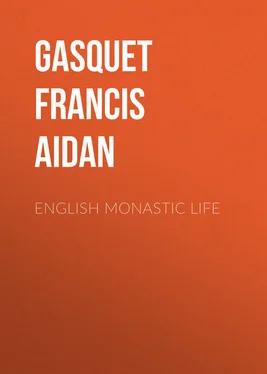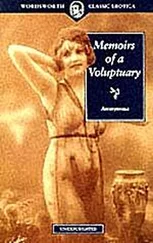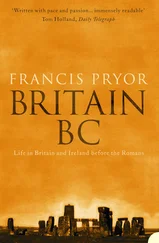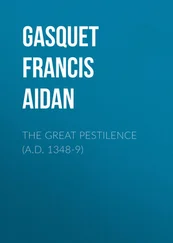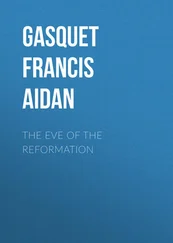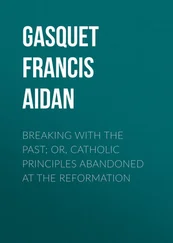Francis Gasquet - English Monastic Life
Здесь есть возможность читать онлайн «Francis Gasquet - English Monastic Life» — ознакомительный отрывок электронной книги совершенно бесплатно, а после прочтения отрывка купить полную версию. В некоторых случаях можно слушать аудио, скачать через торрент в формате fb2 и присутствует краткое содержание. Жанр: foreign_religion, foreign_antique, foreign_prose, на английском языке. Описание произведения, (предисловие) а так же отзывы посетителей доступны на портале библиотеки ЛибКат.
- Название:English Monastic Life
- Автор:
- Жанр:
- Год:неизвестен
- ISBN:нет данных
- Рейтинг книги:5 / 5. Голосов: 1
-
Избранное:Добавить в избранное
- Отзывы:
-
Ваша оценка:
- 100
- 1
- 2
- 3
- 4
- 5
English Monastic Life: краткое содержание, описание и аннотация
Предлагаем к чтению аннотацию, описание, краткое содержание или предисловие (зависит от того, что написал сам автор книги «English Monastic Life»). Если вы не нашли необходимую информацию о книге — напишите в комментариях, мы постараемся отыскать её.
English Monastic Life — читать онлайн ознакомительный отрывок
Ниже представлен текст книги, разбитый по страницам. Система сохранения места последней прочитанной страницы, позволяет с удобством читать онлайн бесплатно книгу «English Monastic Life», без необходимости каждый раз заново искать на чём Вы остановились. Поставьте закладку, и сможете в любой момент перейти на страницу, на которой закончили чтение.
Интервал:
Закладка:
In addition to the above-named parts of every religious house, there were in most monasteries, and especially in the larger ones, a great number of offices. The officials, or obedientiaries, for instance, had their chequer or scaccarium , where the accounts of the various estates assigned to the support of the burdens of their special offices were rendered and checked. There were also the usual workrooms for tailors, shoemakers, etc., under the management of the chamberlain, or camerarius, and for the servants of the church, under the sacrist and his assistant. The above, however, will be sufficient to give some general idea of the material parts which composed the ordinary English religious house. More, however, will be learnt of them, and especially of their use, when the work of the officials, and the daily life led by the monks in the cloister is discussed.
CHAPTER III
THE MONASTERY AND ITS RULERS
The monastic rule, at least after the days of St. Benedict, was eminently social. Both in theory and in practice the regular observance of the great abbeys and other religious houses was based upon the principle of common life. Monks and other religious were not solitaries or hermits, but they lived and worked and prayed together in an association as close as it is possible to conceive. The community or corporation was the sole entity; individual interests were merged in that of the general body, and the life of an individual member was in reality merely an item in the common life of the convent as a whole. This is practically true in all forms of regular life, without regard to any variety of observance or rule. Some regulations for English pre-Reformation houses lay great stress upon this great principle of monastic life. To emphasise it, they require from all outward signs of respect for the community as a whole, and especially at such times and on such occasions as the convent was gathered together in its corporate capacity. Should the religious, for example, be passing in procession, either through the cloister or elsewhere, anyone meeting them, even were it the superior himself, was bound to turn aside to avoid them altogether, or to draw on one side and salute them with a bow as they went by. When they were gathered together for any public duty no noise of any kind likely to reach their ears was to be permitted. When the religious were sitting in the cloister, strangers in the parlour were to be warned to speak in low tones, and above all to avoid laughter which might penetrate to them in their seclusion. If the superior was prevented from taking his meals in the common refectory, he was charged to acquaint the next in office beforehand, so that the community might not be kept waiting by expecting him. So, too, the servers, who remained behind in the refectory after meals, were to show their respect for the community by bowing towards its members, as they passed in procession before them. For the same reason officials, like the cellarer, the kitchener, and the refectorian were bound to see that all was ready in their various departments, so that the convent should never be kept waiting for a meal. In these and numberless other ways monastic regulations emphasised the respect that must be paid to the community as a corporate whole.
As the end and object of all forms of religious life was one and the same, the general tenor of that life was practically identical in all religious houses. The main features of the observances were the same, not merely in houses of the same Order, which naturally would be the case, but in every religious establishment irrespective of rule. A comparison of the various Custumals or Consuetudinaries which set forth the details of the religious life in the English houses of various Orders, will show that there is sometimes actual verbal agreement in these directions, even in the case of bodies so different as the Benedictines and the Cistercians on the one hand, and the Premonstratensians or White Canons and the Canons Regular on the other. Moreover, where no actual verbal agreement can now be detected, the rules of life are more than similar even in minute points of observance. This is, of course, precisely what anyone possessing a knowledge of the meaning and object of regular life, especially when the number of the community was considerable, would be led to expect. And, it is this fact which makes it possible to describe the life led in an English pre-Reformation monastery in such a way as to present a fairly correct picture of the life, whether in a Benedictine or Cistercian abbey, or in a house of Canons Regular, or, with certain allowances, in a Franciscan or Dominican friary.
This is true also in respect to convents of women. The life led by these ladies who had dedicated themselves to God in the cloister, was for practical purposes the same as that lived by the monks, with a few necessary exceptions. Its end, and the means by which that end was sought to be obtained, were the same. The abbess, like the abbot, had jurisdiction over the lives of her subjects, and like him she bore a crosier as a symbol of her office and of her rank. She took tithes from churches impropriated to her house, presented the secular vicars to serve the parochial churches, and had all the privileges of a landlord over the temporal estates attached to her abbey. The abbess of Shaftesbury, for instance, at one time, found seven knights’ fees for the king’s service and held her own manor courts. Wilton, Barking, and Nunnaminster as well as Shaftesbury “held of the king by an entire barony,” and by the right of this tenure had, for a period, the privilege of being summoned to Parliament. As regards the interior arrangements of the house, a convent followed very closely that of a monastery, and practically what is said of the officials and life of the latter is true also of the former.
In order to understand this regular life the inquirer must know something of the offices and position of the various superiors and officials, and must understand the parts, and the disposition of the various parts, of the material buildings in which that life was led. Moreover, he must realise the divisions of the day, and the meaning of the regulations, which were intended to control the day’s work in general, and in a special manner, the ecclesiastical side of it, which occupied so considerable a portion of every conventual day. After the description of the main portion of the monastic buildings given in the last chapter, the reader’s attention is now directed to the officials of the monastery and their duties.
In most Benedictine and Cistercian houses the superior was an abbot. By the constitution of St. Norbert for his White canons, in Premonstratensian establishments as in the larger houses of Augustinian, or Black, canons, the head also received the title and dignity of abbot. In English Benedictine monasteries which were attached to cathedral churches, such as Canterbury, Winchester, Durham and elsewhere, the superiors, although hardly inferior in position and dignity to the heads of the great abbeys, were priors. This constitution of cathedrals with monastic chapters was practically peculiar to this country. It had grown up with the life of the church from the days of its first founders, the monastic followers of St. Augustine. No fewer than nine of the old cathedral foundations were Benedictine, whilst one, Carlisle, belonged to the Canons Regular. Chester, Gloucester, and Peterborough, made into cathedrals by Henry VIII., were previously Benedictine abbeys.
In the case of these cathedral monasteries the bishop was in many ways regarded as holding the place of the abbot. He was frequently addressed as such, and in some instances at least he exercised a certain limited jurisdiction over the convent and claimed to appoint some of the officials, notably those who had most to do with his cathedral church, like the sacrist and the precentor. Such claims, however, when made were often successfully resisted, like the further claim to appoint the superior, put forward at times by a bishop with a monastic chapter. So far, then, as the practical management of the cathedral monasteries is concerned, the priors ruled with an authority equal to that of an abbot, and whatever legislation applies to the latter would apply equally to the former. The same may be said of the superior of those houses of Canons Regular, and other bodies, where the chief official was a prior. This will only partially be true in the case of the heads of dependent monasteries, such as Tynemouth, which was a cell of St. Alban’s Abbey, and whose superior, although a prior ruling the house with full jurisdiction, was nominated by the abbot of the mother house, and held office not for life, but at his will and pleasure. The same may be said of the priors of Dominican houses, and of the guardians of Franciscan friaries, whose office was temporary; and of the heads of alien monasteries, who were dependent to a greater or less extent upon their foreign superiors.
Читать дальшеИнтервал:
Закладка:
Похожие книги на «English Monastic Life»
Представляем Вашему вниманию похожие книги на «English Monastic Life» списком для выбора. Мы отобрали схожую по названию и смыслу литературу в надежде предоставить читателям больше вариантов отыскать новые, интересные, ещё непрочитанные произведения.
Обсуждение, отзывы о книге «English Monastic Life» и просто собственные мнения читателей. Оставьте ваши комментарии, напишите, что Вы думаете о произведении, его смысле или главных героях. Укажите что конкретно понравилось, а что нет, и почему Вы так считаете.
